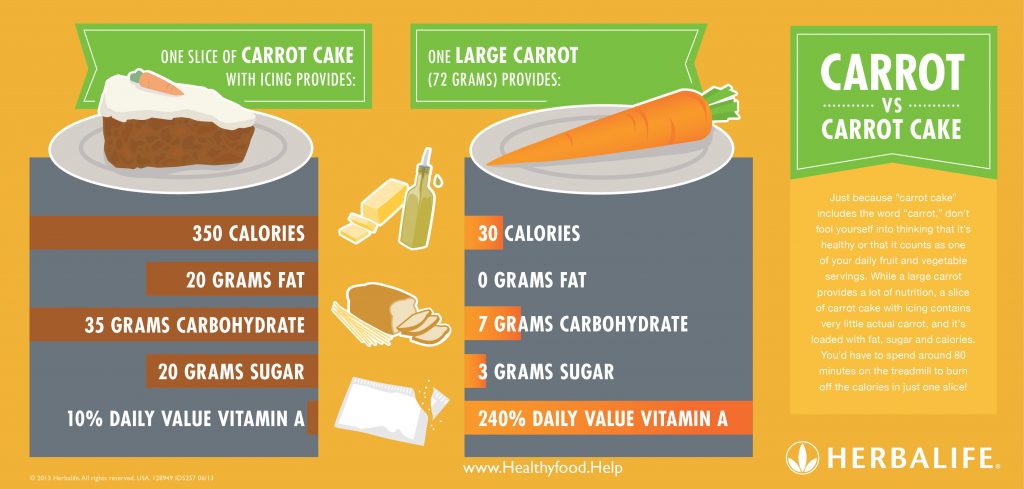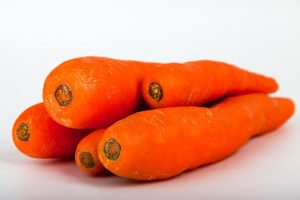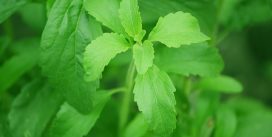What makes Carrots so Special?

Let’s Eat some more real Carrots!
Although carrots are available throughout the year, locally grown carrots are in season in the summer and fall when they are the freshest and most flavorful. Carrots belong to the Umbelliferae family, named after the umbrella-like flower clusters that plants in this family produce. As such, carrots are related to parsnips, fennel, parsley, anise, caraway, cumin and dill.
Carrots can be as small as two inches or as long as three feet, ranging in diameter from one-half of an inch to over two inches. Carrot roots have a crunchy texture and a sweet and minty aromatic taste, while the greens are fresh tasting and slightly bitter.

While we usually associate carrots with the color orange, carrots can actually be found in a host of other colors including white, yellow, red, or purple. In fact, purple, yellow and red carrots were the only color varieties of carrots to be cultivated before the 15th or 16th century.
Carrots are perhaps best known for their rich supply of the antioxidant nutrient that was actually named for them: beta-carotene. However, these delicious root vegetables are the source not only of beta-carotene, but also of a wide variety of antioxidants and other health-supporting nutrients.
The areas of antioxidant benefits, cardiovascular benefits, and anti-cancer benefits are the best-researched areas of health research with respect to dietary intake of carrots. All varieties of carrots contain valuable amounts of antioxidant nutrients. Included here are traditional antioxidants like vitamin C, as well as phytonutrient antioxidants like beta-carotene. The list of carrot phytonutrient antioxidants is by no means limited to beta-carotene, however.
Given their antioxidant richness, it’s not surprising to find numerous research studies documenting the cardiovascular benefits of carrots. Our cardiovascular system needs constant protection from antioxidant damage. This is particularly true of our arteries, which are responsible for carrying highly oxygenated blood. Antioxidant nutrients in carrots are believed to explain many of the cardioprotective benefits provided by these root vegetables.
The many different kinds of carrot antioxidants are most likely to work together and provide us with cardiovascular benefits that we could not obtain from any of these antioxidants alone if they were split apart and consumed individually, in isolation from each other. The synergistic effect of carrot antioxidants is a great example of a whole food and its uniqueness as a source of nourishment.
The name “carrot” comes from the Greek word “karoton,” whose first three letters (kar) are used to designate anything with a horn-like shape. (That horn-like shape, of course, refers to the taproot of the carrot that is the plant part we’re most accustomed to consuming in the U.S.). The beta-carotene that is found in carrots was actually named for the carrot itself!
Currently, U.S. adults average about 12 pounds of carrot intake each year. Approximately 9 pounds are being consumed in fresh form, with the other 3 pounds are being consumed in frozen or canned products. This amount translates into approximately 1 cup of carrots each week in fresh, frozen, or canned form.
 If you purchase carrot roots with attached green tops, the tops should be cut off before storing in the refrigerator since they will cause the carrots to wilt prematurely as they pull moisture from the roots. While the tops can be stored in the refrigerator, kept moist by being wrapped in a damp paper, they should really be used soon after purchase since they are fragile and will quickly begin to wilt.
If you purchase carrot roots with attached green tops, the tops should be cut off before storing in the refrigerator since they will cause the carrots to wilt prematurely as they pull moisture from the roots. While the tops can be stored in the refrigerator, kept moist by being wrapped in a damp paper, they should really be used soon after purchase since they are fragile and will quickly begin to wilt.
Wash carrot roots and gently scrub them with a vegetable brush right before eating. Unless the carrots are old, thick or not grown organically, it is not necessary to peel them. If they are not organically grown, peel them; most all conventionally grown carrots are grown using pesticides and other chemicals.
If the stem end is green, it should be cut away as it will be bitter. Depending upon the recipe or your personal preference, carrots can be left whole or julienned, grated, shredded or sliced into sticks or rounds. Carrots are delicious eaten raw or cooked. While heating can often damage some of the delicate phytonutrients in vegetables, the beta-carotene as found in carrots has been shown to be surprisingly heat-stable. In fact, carrots’ beta-carotene may become more bioavailable through well-timed steaming. Still, be careful not to overcook carrots if you want to your carrots to retain their maximum flavor and strong overall nutritional value.
Here is another healthy whay to prepare a nice carrot dish named Carrot Cake Herbalife Formula 1 Shake: Watch the video and enjoy!
Prepare your own : Get your Formula 1 Herbalife here

__________________________
Independent Herbalife Member - Healthy FooD Nutrition Blog
Buy Authentic Herbalife Products Online :
*Fast Shipping directly from Herbalife Plant
*Freshest Herbalife Products Guaranteed
*Full Service
>>Click here and Get The Best Quality and Service Available 
Feel free to contact me! Fill the form below


